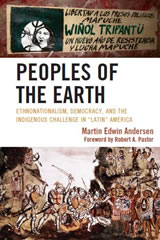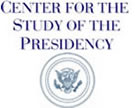Guatemalan security forces said that the owner of the farm, Otto Salguero Morales, had stolen a 2,000 kilo shipment of cocaine from the Zetas, reports Prensa Libre. Salguero allegedly tried to send his niece's husband to negotiate a payback, but he was kidnapped on May 10. When Salguero's niece tried to pay the ransom money, she was killed and cut to pieces, two days before the farm massacre.
So far the authorities have detained one suspect, a 37-year-old Guatemalan believed to be on the Zetas' payroll.
The Zetas have previously deployed such extreme violence mostly in areas where they are facing down multiple competitors. Such force has been seen in Tamaulipas, where the Zetas killed large groups of migrants, presumably when smugglers failed to pay the required "piso," or tax to use their territory. In Tamaulipas, payment of the piso is all the more important as the Zetas are battling the Gulf Cartel and their allies, a coalition of forces known as the New Federation (Nueva Federacion). The greater the number of criminal organizations operating in a given territory, the greater the competition, which makes goods like trafficking routes and extortion taxes more valuable. The more money at stake, the more brutal are the methods used to ensure territorial control.
A similar dynamic may be playing out in northern Guatemala. But unlike in Tamaulipas, the Zetas do not appear to be engaged in open warfare with the rival, homegrown Guatemalan groups. In Peten, these include traditional contraband-dealing families like the Mendozas and the Leones, while further to the southwest in Izapal and Zacapa are the Lorenzanas.
In March 2008, the Zetas slaughtered 11 members of the Leones -- including leader Juan Jose Leon -- in order to win power in Peten. Since then, the Zetas, Lorenzanas and Mendozas have been described as upholding a "pax mafiosa" in Guatemala, with the Zetas reportedly still allowing these criminal clans to use certain drug trafficking routes (perhaps in exchange for another tax).
But given the number of powerful potential rivals in the arena, the Zetas have to strike a tricky balance. Guatemala's contraband families have the key advantage of having operated in the area for decades, and in some cases have gained the passive tolerance (if not open support) of the impoverished communities where they are based. If the Guatemalans have already won local "hearts and minds," it may be that the Zetas decided it is not in their interest to try to do so. As indicated by events like the recent Peten massacre, or the 2008 killing of 17 people at a horse show in Huehuetenango, the Zetas have chosen instead to establish and maintain their power through extreme force.
That the Zetas should choose so frequently to mutilate and dismember their victims sends a powerful message: We will continue destroying you, even after you are dead. The crime does not stop at the killing, but continues beyond it. Such barbarism is a way the Zetas can establish a new type of clientelism with the local population, without investing as much time and money as Guatemalan clans who have operated in the region for decades. It is an attempt to ensure subservience through fear.
It is clear that, whatever the details of the case, Salguero owed the Zetas a debt. The killing of the farmworkers was the Zetas' way of collecting the bill. The marketplace in which this group operates is not regulated by stocks, credit ratings, or declarations of bankruptcy, but kidnappings, killings and torture. It is doubtful that any of the 27 civilians who were killed could offer any kind of useful intelligence to the Zetas about Salguero's whereabouts, and perhaps that was not even what the Zetas wanted. By indiscriminately targeting civilians, it seems their intention was to spread terror and win the ability to conduct their illicit businesses unopposed.






